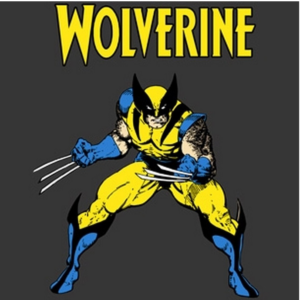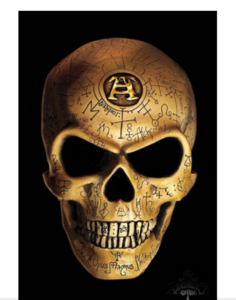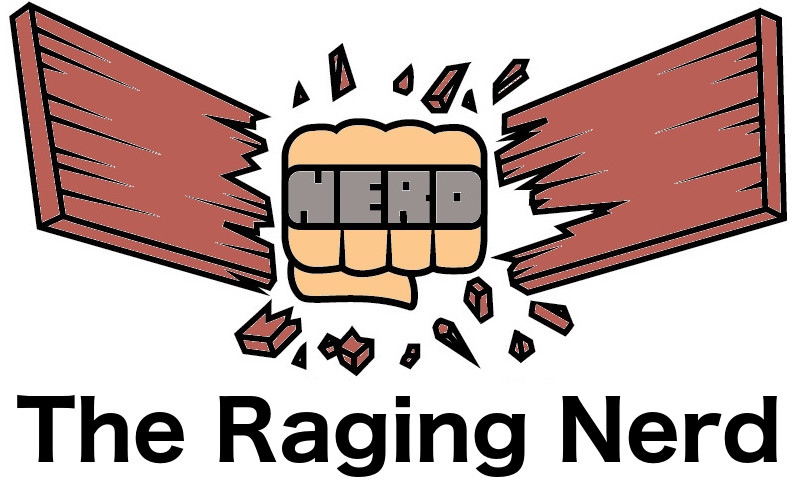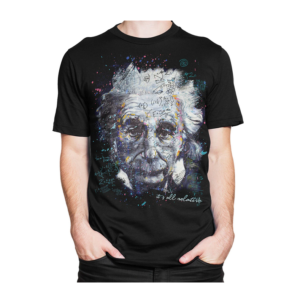Five Things We Miss From The 90s
Saved By The Bell
Saved By The Bell is one of those shows from my early childhood that I remember my older siblings laughing at, but never quite understanding myself because I was too young. Years later, I grew up to actually watch the show and see what all the fuss was about. Why did so many people like this, and why do so many people to this day still wear Saved By The Bell retro TV show t shirts? Whether you remember the 90s or not, Saved By The Bell is one of the most iconically 90s pop cultural items. It’s something that just screams “1990s!” by even being mentioned.
 Crop Tops
Crop Tops
Come on, you remember crop tops. And if you were old enough at the time, you probably enjoyed seeing them (if you’re a guy) or wearing them (if you’re a girl). Crop tops, in case you didn’t know, are shirts that cover the top of the torso but not the midriff, leaving the stomach exposed. This article of clothing was so popular in the 90s that even cartoon characters could be spotted wearing them. They disappeared sometime around the year 2000 and vanished for twenty years. Since 2018 or so, they’re beginning to make a comeback, much to the delight of adolescent males everywhere.
Soul Patches
A lot of people now don’t even know what a soul patch is. A soul patch is the tuft of facial hair just under the lower lip, in the center. It’s that tuft of hair that grows independently of the rest of the beard. Back in the 90s, it was fashionable for a short time to save everything but the soul patch. Unlike the crop top, the soul patch has, unfortunately, not experienced a revival, and still appears gauche even in 2021. We can still hold out hope, though, for some celebrity to decide that he’d look good with a soul patch and make an appearance on YouTube.
Nu-Metal
Nu-Metal had some unlistenable acts, but it also had a lot of great songs. It’s true that Limp Bizkit did not age well. But the 90s also brought us acts with some staying power, such as Disturbed and System of a Down. The distinctive sound of nu-metal guitar can never be forgotten: de-tuned, with the treble turned down and playing thumping palm-muted riffs with bouncy offset rhythms. Anybody who has listened to Korn’s “Here To Stay” can hum the riff from memory. And of course, System of a Down tracks, such as Chop Suey! and Toxicity are immortal classics.
Grunge
If Nu-Metal was the late 90s personified, then grunge was the early 90s. As the musical craze that marked the transition from 1980s to 1990s, grunge combined riffing that was too sloppy to be metal, but far too heavy to fit into any of the softer genres, with depressive lyrics and the trademark 90s “Who cares?” attitude. By catering specifically to the teenage mindset, Nirvana was able to touch off a musical craze overnight from their home city of Seattle. Complete with flannel, body odor, and a stale cheeseburger, grunge is the Platonic form of 1990s music.
There’s no two ways around it: jerks are funny. For some reason, one of the most amusing things you can see on a television show is a character who is a total, unmitigated, incorrigible jerkwad. This comedic device works so well that television shows like Archer and House MD have “this guy is a jerk” as their entire premise! In fact, far from being reviled, these characters are beloved. Archer’s entire character just comes out to being a jerk, but for some reason, you still see him on Archer t shirts. So what gives?
 I think that it’s ultimately funny because of incongruity. It’s funny when someone is a jerk because it’s something you don’t see every day, and something you don’t expect. We’re accustomed to living in a world with standards, with certain expectations and rules. Humor, at its root, is largely about incongruity, and people acting like jerks provides a ready source of incongruous humor. Even slapstick cartoon gags, such as stepping out of the way and trippings someone or slamming a door in their face as they’re running toward you, are a species of comedic incongruity. They don’t fit with their surroundings, and that’s the point.
I think that it’s ultimately funny because of incongruity. It’s funny when someone is a jerk because it’s something you don’t see every day, and something you don’t expect. We’re accustomed to living in a world with standards, with certain expectations and rules. Humor, at its root, is largely about incongruity, and people acting like jerks provides a ready source of incongruous humor. Even slapstick cartoon gags, such as stepping out of the way and trippings someone or slamming a door in their face as they’re running toward you, are a species of comedic incongruity. They don’t fit with their surroundings, and that’s the point.
The second big reason is the mean-spiritedness of it. Not to say that everybody is secretly mean, but we all have a little bit of schadenfreude in us. Every single one of us can think of a time or place where we would have loved to pop off with some horrible response to a person who was annoying us. Shows like Archer can provide stress relief in this way, because they allow us to get our jerk fix vicariously. Maybe you can’t be a jerk when you’re mad at someone, but you can have that experience vicariously by watching the right TV.
A third reason is that it allows for situational comedy and wordplay. When someone is being a jerk, it’s much easier for the show’s writers to steer it into an absurd situation, because unrealistically jerky behavior can plausibly lead to situational comedy. Additionally, there is all kinds of fun to be had with the verbal aspect of humor. Think of R Lee Ermey’s insulting monologues in Full Metal Jacket. Part of what makes those monologs funny, besides the sheer crudeness, is the creativity of the verbiage in the insults he uses, the sheer strangeness of what he says.
So in summary, jerks in TV are funny for the following reasons: they’re incongruous, they play to the pent-up meanness in all of us, and their attitude allows us to experience novel situations and dialogue. So the next time you see someone in an Archer t shirt, think of this article. You know why they’re wearing that shirt, and you know why everybody finds shows like Archer funny.
Harry Potter Characters MBTI

Harry: INFP
Here we have the main character, the one most frequently seen on Harry Potter movie t shirts. A member of House Gryffindor. While it’s not always the case that the main character is the author, and while not all books are autobiographies, it’s still true that the main character frequently has a piece of the author inside of them. JK Rowling is typically typed as INFP or INFJ by the fandom, so it’s no surprise that Harry is an INFP. Harry worries about his competence, reflecting inferior extraverted thinking. He also is a little fussy about having things just right, but is overall disorganized, reflecting tertiary introverted sensing and his overall Perceiving nature. He makes decisions by following his heart and has a frowzy, disheveled appearance, reflecting dominant introverted feeling and secondary extraverted intuition.
Hermione: ISTJ
A lot of people are tempted to type Hermione as INTP or INTJ, but I’m going to dispute that. First of all, Hermione is far too organized and by the book to really be an INTP, because INTPs are famously oddballs. INTJs are organized, but they’re also unconventional and typically do not memorize their sources or internalize concrete information precisely, preferring abstraction. Her preference for concrete, memorized information speaks to dominant introverted sensing. Additionally, Hermione’s organization and excellence in a conventional setting speaks to an SJ with Te. So Hermione is ISTJ.
Luna Lovegood: INTP
INTPs are known for being the single weirdest type. Luna’s spaciness and absent-minded nature fit perfectly with the traits of the INTP. She is also very unconventional, and spends her time on hobbies that are strange and esoteric even by wizarding standards. Another factor that clues us into her type is her role in the story. Like many INTP characters, she plays a peripheral role in the story. Her position as a “side” character is one of the biggest clues that she is INTP, because INTPs in fiction are almost never main characters.
Remus Lupin: INFJ
At first blush, one is tempted to type Lupin as INTJ. He’s mysterious, intelligent, and a loner. One knows almost nothing about him. In the books, he presents as an oracular presence, an unknown quantity. Additionally, he teaches a self-defense class (Defense Against The Dark Arts) which seems like a very INTJ thing to do. However, Lupin is simply too soft to be an INTJ. And when we have someone who looks and acts like an INTJ but just doesn’t appear cold and hard enough, then we know that we have to change that third letter: INFJ.
Severus Snape: INTP
This one may come as a surprise. Because of his hardness, many people type Snape as INTJ. However, when we get a glimpse into his past, we see something shocking: he was bullies when he was younger. INTJs are rarely the sort of people to have been bullied in their pasts. So while Snape has all the hallmarks of an INTx character, that fourth letter can be difficult because those two types often appear so similar from the outside. The decision on how we resolve his final letter is made by noticing his past.
Origins of Wolverine
Wolverine is quite an old character. I’m not talking about the fictional character’s age. I’m talking about when the character was created. Wolverine first appeared in a comic book way back in 1974, nearly fifty years ago! Most people today know who the character is, and learned about him when they were growing up. It has often been said that superheroes are the modern equivalent of ancient Greek heroes, and their place in culture seems to support that idea. While we all know the real-world origins of the fictional character, the idea of Wolverine, many people don’t know about his in-universe origins.
 Wolverine, as a character, was created in 1974, but the creators did not give him an origin story until 2001. So the character had already existed for twenty seven years before he was given an origin story. His origin story appeared in a comic book series from Marvel called Origins. How… original. This was exciting for a lot of fans because Wolverine had hitherto been very mysterious in terms of where he came from and what his character’s background was. It was known that he was some sort of military or ex-soldier, but he was mostly an enigma.
Wolverine, as a character, was created in 1974, but the creators did not give him an origin story until 2001. So the character had already existed for twenty seven years before he was given an origin story. His origin story appeared in a comic book series from Marvel called Origins. How… original. This was exciting for a lot of fans because Wolverine had hitherto been very mysterious in terms of where he came from and what his character’s background was. It was known that he was some sort of military or ex-soldier, but he was mostly an enigma.
Origins cleared up a lot of that by telling us where the character was born. It was explained that Wolverine was born in the 19th century, making him one of the older mutants. He is originally Canadian. It is also explained that he spent much of his time fighting in wars: Wolverine was known to have fought in the American Civil War, World War One, World War Two, and the Vietnam War. This explains the origins of his fighting skills. He was also “executed” once (under false pretenses) by firing squad, but survived thanks to his ability to regenerate.
The Origins story was then made into a movie eight years later. In 2009, X-Men Origins: Wolverine was added to the long list of X-Men films made around that time, starring Hugh Jackman as Wolverine. The X-Men Origins: Wolverine movie is heavily based on the events of the Origins comics. The movie was fraught during filming with a number of problems. The screenplay was still being written while the movie was being filmed. It was also filmed in three different countries, and an incomplete workprint wound up being leaked onto the Internet before the theatrical release of the film.
Wolverine is one of, if not the, most popular of the X-Men. He is frequently featured in comic books, and when you see someone in an X-Men t shirt, it’s usually one that involves Wolverine. A superhero’s origin story is a big part of their character. Some heroes, like Batman, have their backstory built in from the beginning, while others, like Wolverine, had to wait some time for their origin story to finally be filled in.
Einstein: Too Smart For His Own Good?
Einstein was a strange bird, there can be no doubt about that. My first assumption from childhood, when I learned about Einstein, was that his style of dress and his hairdo were normal for his time period. That wasn’t true, though. Einstein was considered strange, socially inept, and childlike his whole life. While the rumors about him being a terrible student are not true, it is true that he was inept at many non-intellectual things. The gist of it is that Einstein was crap with practicalities: he was very smart in theoretical things, but his intellect was a hindrance in any other realm.
One good example of this is in the job market. Einstein was not very good at holding down a job while he was young. In fact, he was consistently fired from most of the jobs he applied to. He was able to graduate from university, but he could not do any jobs without being fired. He even took jobs tutoring small children, and was fired from those jobs as well. Some have reported that Einstein was lost in his head much of the time and could not do practical work-a-day jobs very well. He simply wasn’t cut out for manual labor. He wasn’t cut out for tutoring, either.
Einstein’s big break came when he worked at a patent office. This worked for him because all he had to do was review paperwork. More importantly, he didn’t have to constantly pay attention all the time. There were long stretches where he simply sat at his desk and did nothing at all. During those long stretches, he could work on his physical theories. The patent office was a blessing because it gave him time to work on physics and did not demand things from him that he could not produce, such as constantly paying attention to what he was doing.
Einstein is now a man whose name is synonymous with genius. But there are some people who are too intelligent for their own good. If you’re too absorbed in abstract ideas, and cannot ground yourself in physical reality no matter how hard you try, then it may be that you’re past the point where intelligence has any practical value.
Another way to put it is that intelligence is only useful up to a point. The point where it stops being useful to an individual is when it can no longer work for practical things. Past a certain point, intelligence is only good for doing abstract theoretical stuff and doesn’t really help anymore with the ordinary practical stuff. In fact, as in Einstein’s case, it can even be hindrance. So keep in mind whenever you see a person wearing an Einstein novelty t shirt that the man on that shirt was brilliant, but handicapped in a way by his intelligence.
The Appeal Of Alchemy
Alchemy seems so mysterious. The word conjures up images of arcane charts, lists of obscure elemental symbols, wizards and alchemists turning lead into gold, fantasy worlds, goblets, alembics, mortar and pestles, retorts, furnaces and beakers. There is something very Frankenstein-ish about alchemy, something that tempts the imagination and fascinates the mind. But what was alchemy, really? Where did all of this strange symbolism that straddles the border between magic and science come from? There’s an entire history behind it, an entire world of esotericism and proto-science, so let’s take a look at it. You might learn something really cool.
 Alchemy is a proto-science, but it’s also associated with magic. Many of the discoveries of ancient alchemy were legitimate scientific discoveries. The idea that you could control the conditions around a piece of matter and put it through different processes in order to induce desired changes is not, strictly speaking, wrong. Fundamentally, alchemy is the same basic idea as chemistry: the study of change. The difference is that alchemy and chemistry separated during the Renaissance and Enlightenment, with alchemy becoming more and more esoteric and magical, while chemistry joined the rest of the physical sciences. So alchemy is the origin of chemistry.
Alchemy is a proto-science, but it’s also associated with magic. Many of the discoveries of ancient alchemy were legitimate scientific discoveries. The idea that you could control the conditions around a piece of matter and put it through different processes in order to induce desired changes is not, strictly speaking, wrong. Fundamentally, alchemy is the same basic idea as chemistry: the study of change. The difference is that alchemy and chemistry separated during the Renaissance and Enlightenment, with alchemy becoming more and more esoteric and magical, while chemistry joined the rest of the physical sciences. So alchemy is the origin of chemistry.
However, even before splitting off from chemistry, alchemy was still deeply involved with magic and occultism. This is clear from the associations between alchemy and the various esoteric philosophies of late antiquity. Neoplatonists, as well as magicians and writers like Hermes Trismegistus, who wrote the famed Emerald Tablet, all dabbled in alchemy. The famous phrase “As above, so below,” first recorded in Trismegistus’ Emerald Tablet, is part of the philosophy of alchemy.
Indeed, many people even into the modern era experimented with alchemy. Even Isaac Newton, who laid the foundations of physics from his time until the 20th century, was not immune. Newton had an alchemical chest and spent much of his time absorbed in strange and arcane ponderings on the nature of alchemical processes. He saw a thoroughly spiritual dimension in it as well. It wasn’t just another science to him. He really thought that there were occult and supernormal powers that could be granted through alchemy.
All of this makes alchemy a good basis for much fantasy literature. Writing, video games, anime, and television shows all draw from alchemical themes from time to time. The reason for this is that alchemy’s dated nature makes it seem foreign. Nobody has seriously studied alchemy for a long time, so the symbols are no longer familiar, and this gives it a strange, foreign feeling. This is why alchemical symbology still looks so cool on posters, mugs, and alchemical novelty t shirts.
Adventure Time’s Intended Audience
There has been a big shift in entertainment over the past two decades. It has always been normal for adults to enjoy a little bit of children’s entertainment. You’re supposed to watch that stuff with your kids, after all. And there are plenty of grownup jokes in children’s movies that are there for the adults to pick up, and they’re designed to go over the kid’s heads. However, in the past decade or two, it has become much more normal for adults to consume children’s entertainment.
 This has created a strange shift in children’s entertainment. Whereas older cartoons were just silly or banal, newer cartoons occupy a grey area between children’s shows and sitcoms for grownups. Good examples of this include the Regular Show, Stephen Universe, and, of course, Adventure Time. All of these shows are suitable for kids, yes. However, when consuming children’s entertainment, you usually have to suspend judgment. You have to let down your guard a little to enjoy kid’s entertainment. The difference with newer cartoons is that they’re written with a built-in grownup appeal, so that an adult can consume them without feeling as if they’re doing something age inappropriate.
This has created a strange shift in children’s entertainment. Whereas older cartoons were just silly or banal, newer cartoons occupy a grey area between children’s shows and sitcoms for grownups. Good examples of this include the Regular Show, Stephen Universe, and, of course, Adventure Time. All of these shows are suitable for kids, yes. However, when consuming children’s entertainment, you usually have to suspend judgment. You have to let down your guard a little to enjoy kid’s entertainment. The difference with newer cartoons is that they’re written with a built-in grownup appeal, so that an adult can consume them without feeling as if they’re doing something age inappropriate.
Adventure Time is a good example of this on multiple levels. First of all, it’s a little known fact about the Adventure Time canon that the show is post-apocalyptic. This is incongruous with the way the show presents itself. It appears as something very happy go lucky. It’s also fantasy themed, and fantasy as a genre is typically characterized as escapist. But that extra layer of depth added by the way the world is constructed is just one example of how the show is designed to appeal to multiple demographics.
Another aspect of Adventure Time’s appeal to multiple demographics is its short length. Most episodes run about 11 minutes. This is intentional. If you’re a kid, then it’s bite-sized entertainment that can be consumed regardless of a child’s short attention span. If you’re an adult, then it’s the sort of thing you can watch on your phone while sitting at a bus stop or in a waiting room with some earbuds. The short, consumable nature of the show works for both children and adults, albeit for different reasons.
Adventure Time, and other cartoons like it, shows the changing nature of entertainment. First, cartoons were for kids. Then, they were for kids, but also watched “ironically” by college students and other people who wanted to signal their whimsical ironic sense of humor. Now, the irony has become sincere and you can quite comfortable be an adult running around in an Adventure Time t shirt.
AC/DC: proto-metal
AC/DC was one of the premier rock bands of the 1970s and remains one of the most well-known acts in all of classic rock. Even people who don’t like the relatively mild and light classic rock sound can still get into AC/DC. Priori to AC/DC, a lot of the so-called hard rock outfits, such as Steppenwolf, were tame by today’s standards. If you don’t believe me, turn on Born To Be Wild by Steppenwolf sometime. Yeah, it’s fun, it’s catchy, its certainly sounds a little wild… But it’s not hard. It doesn’t aggressively grab your head the way you expect it to. Hard rock just wasn’t there yet when Steppenwolf made their music.
 Now throw on Dirty Deeds Done Dirt Cheap by AC/DC. Not only does it aggressively grab your head, it’ll stomp on your face, too, and possibly yank your ear a little. Bon Scott’s raspy voice and persistent vocal fry, his borderline deranged delivery, along with Angus Young’s Gibson SG screaming through a set of Marshall stacks, makes it clear what you’re listening to.
Now throw on Dirty Deeds Done Dirt Cheap by AC/DC. Not only does it aggressively grab your head, it’ll stomp on your face, too, and possibly yank your ear a little. Bon Scott’s raspy voice and persistent vocal fry, his borderline deranged delivery, along with Angus Young’s Gibson SG screaming through a set of Marshall stacks, makes it clear what you’re listening to.
That’s what AC/DC was. It wouldn’t be until Black Sabbath found their metal voice on Master of Reality when the metal genre would truly take off, but the big stumbling brontosaurus that was Toni Iommi’s guitar work could not have existed without acts like AC/DC. AC/DC’s big contribution was their fearlessness in experimenting with extremity. There was no such thing as too loud, no such thing as too raucous or obnoxious or vulgar. This is the band that recorded the song Big Balls, after all. Incidentally, Big Balls was the first song I learned to play all the way through on guitar.
Things would get harder after that, of course. The metal genre, with its insatiable hunger for boundary-breaking, would proceed from the primitive heavy metal of Black Sabbath through thrash, death, and black metal, before finally burning out in post-black and blackgaze. And hard rock would follow its own course into hair metal and then grunge. But AC/DC was one of the first bands to realize that you can make almost any chord sound cool just by cranking the gain high enough on that big tube stack.
There is a reason why AC/DC is immortal. That first impression never dies. The mark they made on rock and roll, along with some of the immortal rockers such as Highway To Hell and Thunderstruck, have made them permanently contemporary. The original band members are old men now, but that doesn’t stop today’s youth from going around in AC/DC rock t shirts.




